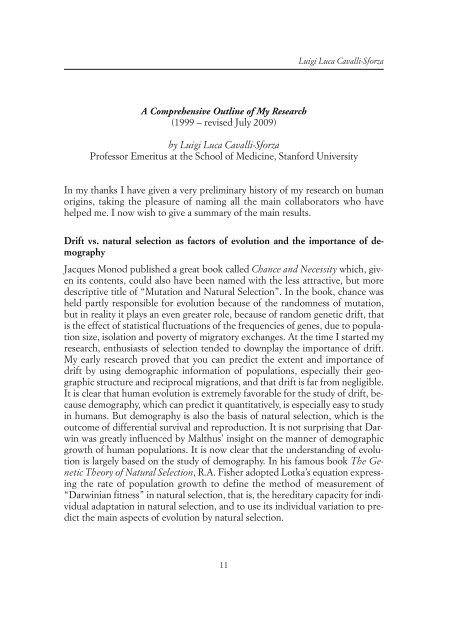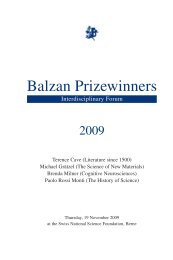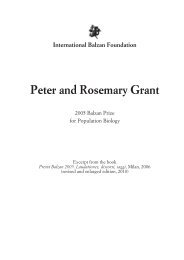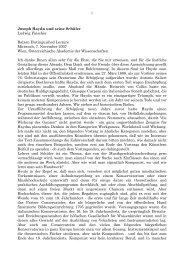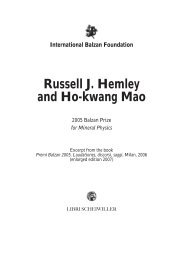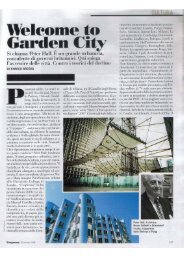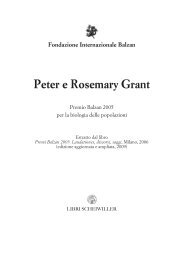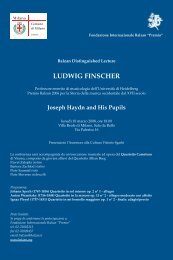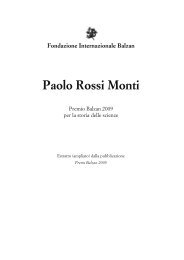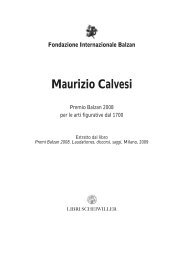International Balzan Foundation Luigi Luca Cavalli
International Balzan Foundation Luigi Luca Cavalli
International Balzan Foundation Luigi Luca Cavalli
You also want an ePaper? Increase the reach of your titles
YUMPU automatically turns print PDFs into web optimized ePapers that Google loves.
A Comprehensive Outline of My Research<br />
(1999 – revised July 2009)<br />
<strong>Luigi</strong> <strong>Luca</strong> <strong>Cavalli</strong>-Sforza<br />
by <strong>Luigi</strong> <strong>Luca</strong> <strong>Cavalli</strong>-Sforza<br />
Professor Emeritus at the School of Medicine, Stanford University<br />
In my thanks I have given a very preliminary history of my research on human<br />
origins, taking the pleasure of naming all the main collaborators who have<br />
helped me. I now wish to give a summary of the main results.<br />
Drift vs. natural selection as factors of evolution and the importance of demography<br />
Jacques Monod published a great book called Chance and Necessity which, given<br />
its contents, could also have been named with the less attractive, but more<br />
descriptive title of “Mutation and Natural Selection”. In the book, chance was<br />
held partly responsible for evolution because of the randomness of mutation,<br />
but in reality it plays an even greater role, because of random genetic drift, that<br />
is the effect of statistical fluctuations of the frequencies of genes, due to population<br />
size, isolation and poverty of migratory exchanges. At the time I started my<br />
research, enthusiasts of selection tended to downplay the importance of drift.<br />
My early research proved that you can predict the extent and importance of<br />
drift by using demographic information of populations, especially their geographic<br />
structure and reciprocal migrations, and that drift is far from negligible.<br />
It is clear that human evolution is extremely favorable for the study of drift, because<br />
demography, which can predict it quantitatively, is especially easy to study<br />
in humans. But demography is also the basis of natural selection, which is the<br />
outcome of differential survival and reproduction. It is not surprising that Darwin<br />
was greatly influenced by Malthus’ insight on the manner of demographic<br />
growth of human populations. It is now clear that the understanding of evolution<br />
is largely based on the study of demography. In his famous book The Genetic<br />
Theory of Natural Selection, R.A. Fisher adopted Lotka’s equation expressing<br />
the rate of population growth to define the method of measurement of<br />
“Darwinian fitness” in natural selection, that is, the hereditary capacity for individual<br />
adaptation in natural selection, and to use its individual variation to predict<br />
the main aspects of evolution by natural selection.<br />
11


